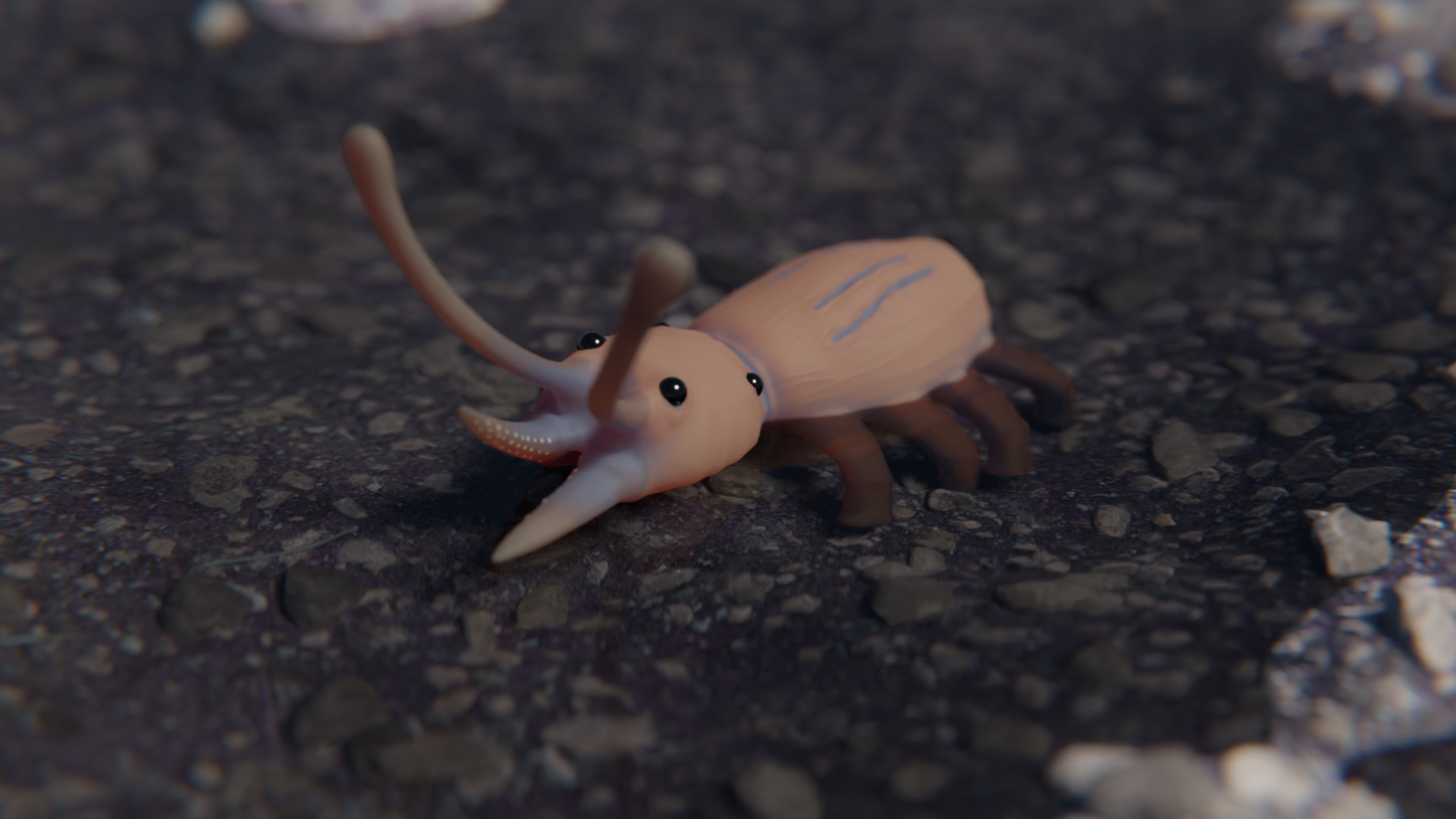Aktamisa
Aktamisas are one of the first organisms to venture onto the shores of Almaishah. They are adapted for survival within the intertidal zone, able to emerge from water for brief periods of time. They act as opportunistic scavengers, tracking down and feasting on the remains of marine organisms that have been washed ashore. An aktamisa is pictured here stopping for a rest in a shallow pool while traveling around a rocky shore. [Creature design by Squiddum]
Basic Information
Anatomy
The internal gill cavity of the second tagma is capable of storing water, acting as a respiratory reservoir. Furthermore the spiracles are now able to be clamped shut to prevent water loss when out of water. This allows the Aktamisa to emerge from the ocean temporarily without suffocating. The skin is a leathery cuticle that resists desiccation when exposed to air at low tides, and contains a high concentration of melanin to prevent radiation damage to the organism. The legs have been reinforced with stronger muscles that are capable of supporting the body when partially emerged from water. The feeding appendages of the first tagma have been heavily modified: The first pair of appendages have lengthened to become antenna used in scent detection, while the second pair are lined with radula-like keratinous projections for rasping carrion.
Genetics and Reproduction
Instead of broadcast spawning, Aktamisas mate by locking heads together in an gono-oral kiss, exchanging gametes directly from the reproductive chamber. The female acts as the recipient of sperm from the male, who will then lay the fertilized eggs onto the sediment at the lower intertidal zone.
Ecology and Habitats
Aktamisas are found most commonly in the intertidal zones where they are safe from larger predators. However, their fundamental niche encompasses the seabeds of warm shallow water, only being excluded from deeper habitats by presence of predators and competition. They are scavenging detritivores, feeding on the carrion of other beached organisms. When actively foraging, they use their legs to wander the coastlines and track down any fresh carrion. Otherwise, they will lower their metabolism by burying themselves underneath the sediment within the intertidal zone and entering hibernation.
Dietary Needs and Habits
The second pair of arms of the first tagma are lined in multiple rows of serrated teeth, specialized for scraping flesh from carrion. The arms then manipulate chunks of flesh into the oral cavity for digestion. Since Aktamisas lack a through-gut, they must egect digested food from their stomach through their mouths before feeding.
Additional Information
Geographic Origin and Distribution
They have colonised the shorelines of Yama as well as the northern coasts of Natash, which are coastal areas with sufficient warmth and less intense sunlight.
Perception and Sensory Capabilities
The 4 eyes are evenly distributed around the first tagma to provide near-360 degree vision, but due to low resolution they are unable to distinguish potential carrion from predators. Rather, they rely on their antennas as their main sensory input. The chemoreceptors of an antennae can detect trace scents both in air and in water, able to determine strength, direction and type of scents. The chemoreceptors are so sensitive that an Aktamisa can detect carrion from up to 2km away.











Comments